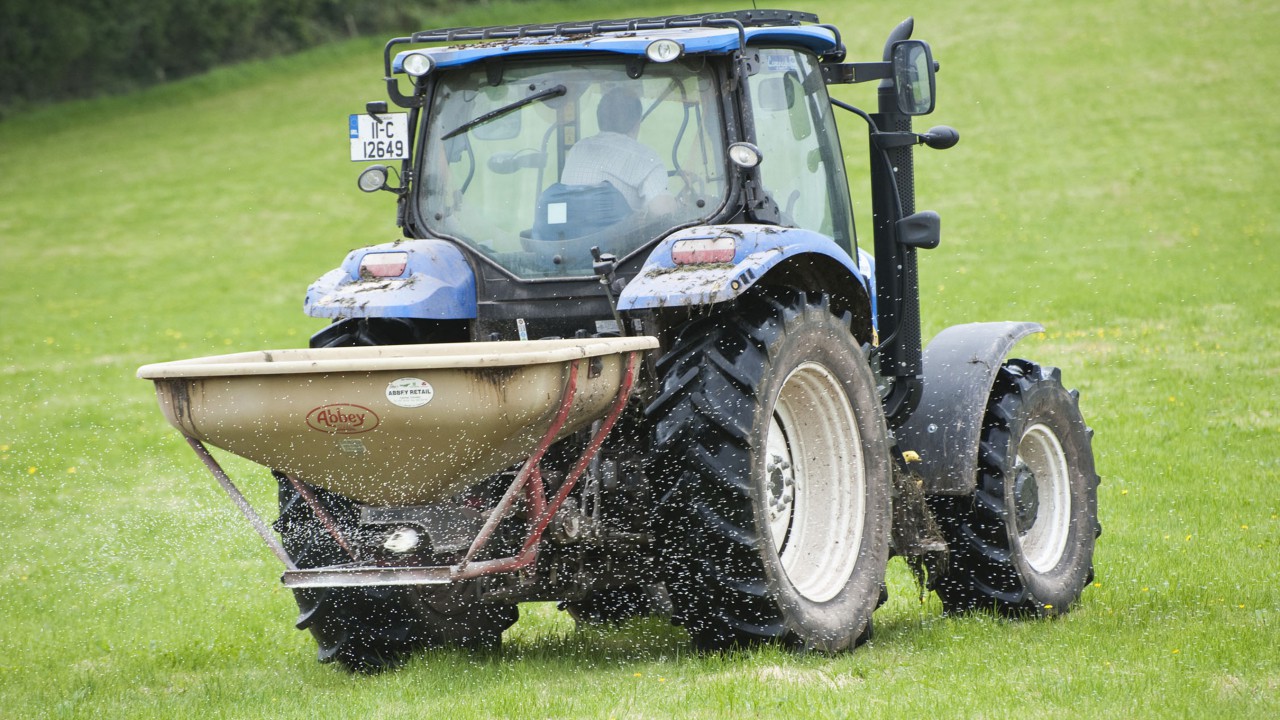Climate Action Plan: Maximum nitrogen limits review by mid-2024
A review of maximum nitrogen (N) limits and providing options to farmers to voluntarily reduce livestock numbers are among the key measures included in Climate Action Plan 2024.
Minister for Environment, Climate and Communications Eamon Ryan has said that the new plan, approved by Cabinet yesterday (Wednesday, December 20), will go out for public consultation early in the new year.
The plan, which will be accompanied by a Strategic Environmental Assessment (SEA), outlines how Ireland will "accelerate the action required to respond to the climate crisis".
Although there is progress in key areas of the economy on reducing emissions, the document warns that there can be "no room for complacency, and that there is still a significant challenge ahead of us if we are to transition to a greener, cleaner future".
"Last year, we saw a drop in emissions of 1.9%, against a backdrop of a booming economy and increasing population.
"It’s nowhere near enough but it is a start, and as more programmes come on stream, I believe we can begin to decrease our emissions exponentially," Minister Ryan said.
Agriculture accounted for 34.3% of Ireland’s greenhouse gas (GHG) emissions in 2022, the sector has a target to reduce annual emissions by 25% by 2023, when compared with 2018 levels.
Agricultural emissions dropped by 1.2% in 2022 due to reductions in fertiliser use by farmers.
Climate Action Plan 2024 warns that "to meet the total emissions in the first carbon budget, a steeper reduction in emissions is required for the remaining period".
Minister Ryan said that the agriculture sector "is embracing change" with a drop in fertiliser use over the past two years, while organic farming has "more than doubled since 2021".
However, the proposed plan states that "there is a risk of a rebound in chemical N use if prices fall, which will have to be managed through a continued focus at farm level on replacing chemical nitrogen with organic sources and improving nitrogen use efficiency".
Climate Action Plan 2024 contains 26 specific measures for the agriculture sector for next year.
It also highlights key measures in relation to fertiliser, breeding and biomethane for delivery in the new year as follows:
- The Department of Agriculture, Food and the Marine (DAFM) to fund establishment of multispecies and clover swards to reduce nitrogen dependence and enhance adaptation;
- Review maximum nitrogen limits as set out in nitrates legislation by the second quarter (Q2 2024), which is separate to reviewing conditions for granting of derogation status;
- Continue to fund low emission slurry spreading (LESS) to contribute to nitrogen reductions;
- Provide support for the Protein Aid Scheme to support the production of legumes, which play an important role in fixing nitrogen from the atmosphere, resulting in reduced chemical nitrogen fertiliser usage and enhance adaptation and resilience;
- Promote improved animal breeding through focusing on low-methane traits;
- Continue to work with all stakeholders to develop a methane inhibitor suitable for pasture grazing animals;
- Continue to develop technologies to reduce methane from stored animal slurries and manures;
- Provide financial support to farmers who convert to organic farming;
- Mobilise the recommendations of the Food Vision sectoral groupings regarding voluntary reduction measures for livestock farmers and support land use diversification options such as anaerobic digestion (AD), forestry and tillage;
- Introduce obligation in the heat sector, incentivising the production of indigenously-produced biomethane;
- Establish a Biomethane Co-ordination Group to oversee delivery of 5.7TWh target and National Biomethane Strategy implementation activities.
The plan calls for measures in the Teagasc 2023 Marginal Abatement Cost Curve (MACC) that can contribute to reducing emissions from nitrogen fertiliser to be incorporated into the Climate Action Plan.





